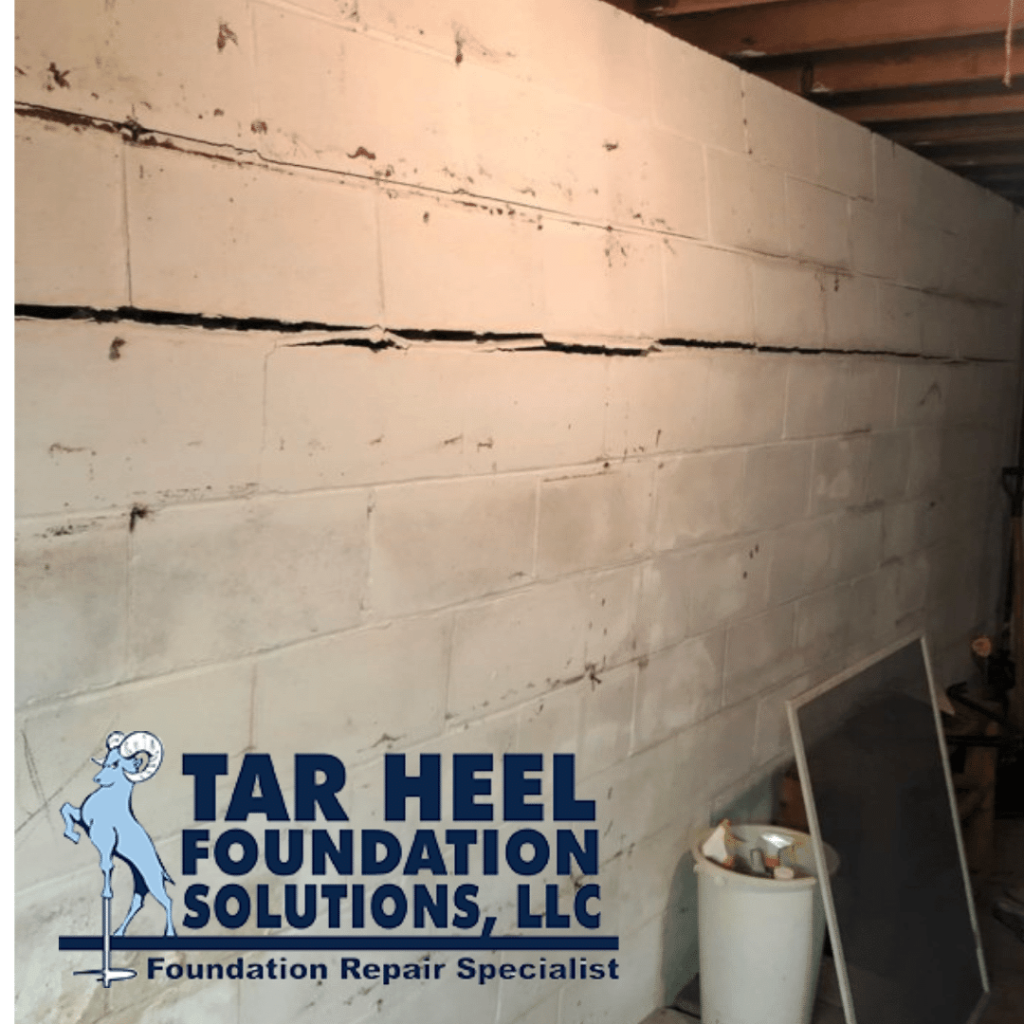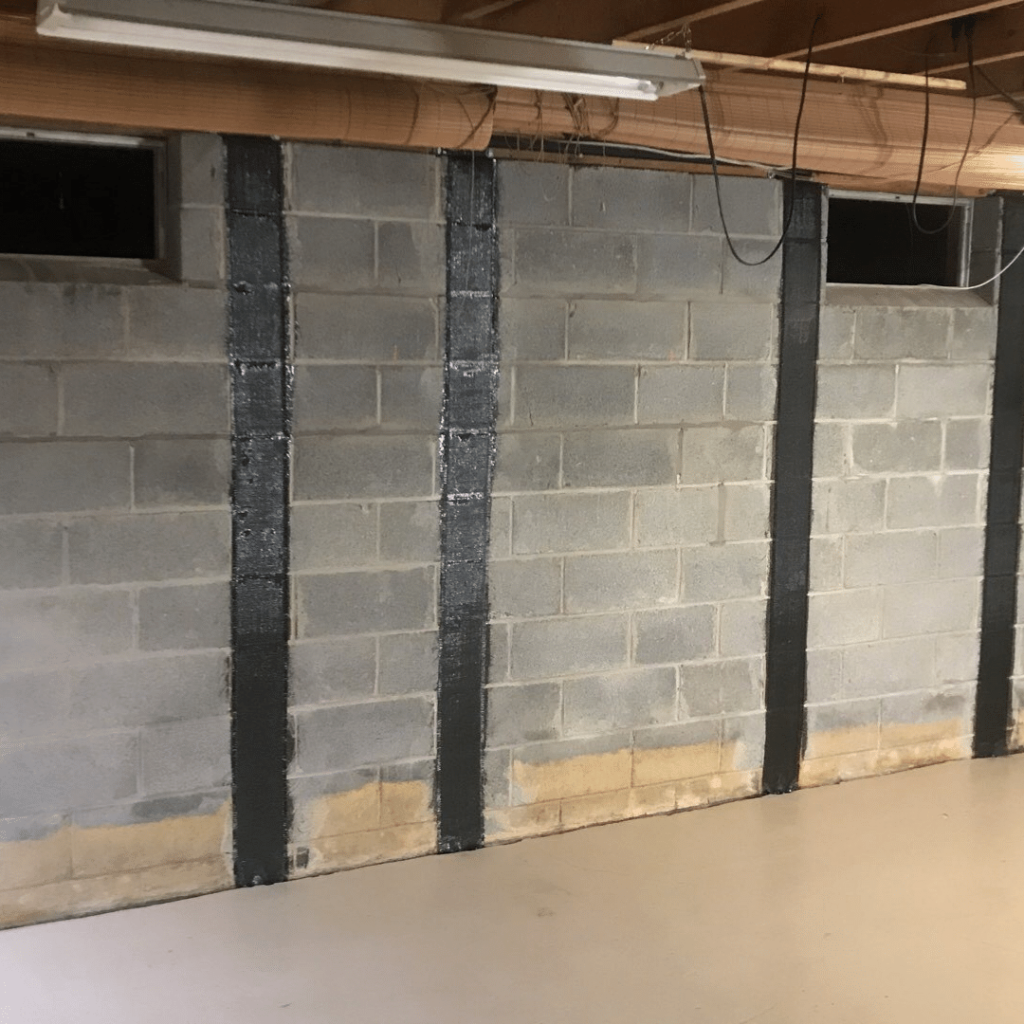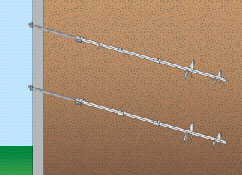No homeowner wants to see cracks in their basement or foundation wall. If the crack is vertical, the good news is that many vertical cracks are minor and non-structural. When you have a horizontal crack, however, it is likely trouble. When that horizontal crack is accompanied by the wall bowing inward at the cracking point, the time has come to contact a bowing wall repair specialist.


The longer it goes without repairs, the larger the crack will get and the more the wall will bow or lean. And the worse the damage gets, the more costly the inevitable repairs will become.
If your home in the Charlotte, N.C., or Columbia, S.C., areas has a basement or foundation wall that is beginning to bow inward, contact Tar Heel Foundation Solutions to get a quote on the structural repairs that your home needs.
The two most common causes of bowing foundation or basement walls are hydrostatic pressure and expansive soils.
Each share two common elements: water and the soil surrounding your home.
With hydrostatic pressure, it is the water in the soil itself that is pushing against the basement wall. The water places a greater amount of pressure on the wall than the soil normally exerts. If the pressure gets to be too much, the wall will begin to crack and bow.
A variation on hydrostatic pressure involves the pressure exerted when frost forms on the soil.
While the wall will still need to be repaired, if hydrostatic pressure is to blame then you might also want to look into basic waterproofing options as well. For instance, are your gutters properly installed and downspout extenders connected? Is the grading properly directing water away from the home’s foundation?
Bowing wall repair methods can stabilize the wall itself, but water pooling near a foundation can cause other problems as well. You should also address any water issues.
Charlotte might not be in the portion of North Carolina with the largest amount of expansive clay soils, but it is directly adjacent to it.
Expansive soils are those that have a significant shrink-swell cycle. Most soils expand a bit when wet and then shrink back down when dry. With expansive soils, the swelling is a significant amount larger.
Along with problems with upheaval problems that come with vertical expansion, this swelling can also exert pressure horizontally on a basement wall, which can lead to bowing.
There are two general categories of ways to fix bowing walls: interior stabilization and exterior anchoring. At Tar Heel Foundation Solutions, we offer the most effective option is each of those categories so we can offer you the right fix for your particular wall repair needs.


For a long time the go-to material for interior wall stabilization was steel I-beams. They would be placed along the bowing wall at specific intervals, giving the wall enough strength to withstand the pressure being exerted on the exterior of the wall.
Now imagine a material that is stronger than steel, installs basically flush with the wall rather than jutting out into the room and which you can paint over to hide the repairs.
That is what you get with carbon fiber straps.
The carbon fiber straps are placed at regular intervals along the wall, much like the I-beams would be. They are bonded to the wall with a heavy-duty epoxy and attached to the sill plate at the top and pinned to the foundation floor.
There are plenty of advantages with carbon fiber. It is perhaps the lowest impact of all of the bowing wall repair methods. There is no heavy machinery, no excavations. The entire installation takes place inside. The biggest “impact” portion of the installation is probably the drilling and refilling of small holes in the slab floor to anchor the straps.
You get all of the advantages of a major structural repair with a strong, stable wall without any of the headaches that can often come with significant structural repairs.
You can also paint over the carbon fiber straps, hiding the repair from view far more effectively than most other wall repair options.


As great as carbon fiber is, it is a stabilizing force, not a straightening one. That means that there are certain cases where a wall already has significant bowing or shearing where a different solution is needed.
Much like helical piers have become the go to method to combat foundation settlement problems, helical tiebacks are the exterior anchoring option of choice for bowing wall repair.
Tiebacks are essentially helical piers, but with two differences. First, they are installed close to horizontal rather than straight down into the soil like helical piers. Second, they are attached not by brackets but by a wall plate inside the basement.
We screw the tiebacks into the ground outside until the torque readings say the anchoring is strong enough to support the wall against the forces causing it to bow.
One of the downsides of helical tiebacks is also one of their advantages. Often excavation will be necessary along the affected wall. That is a drawback because it will require removing and then replanting any affected landscaping. The advantage is that this excavation allows the tiebacks to straighten the wall rather than simply keep it from bowing more.
At Tar Heel Foundation Solutions, we specialize in structural repairs like fixing bowing walls in Charlotte, Columbia, S.C., and the rest of our service area. Give us a call or contact us to get a wall repair quote.